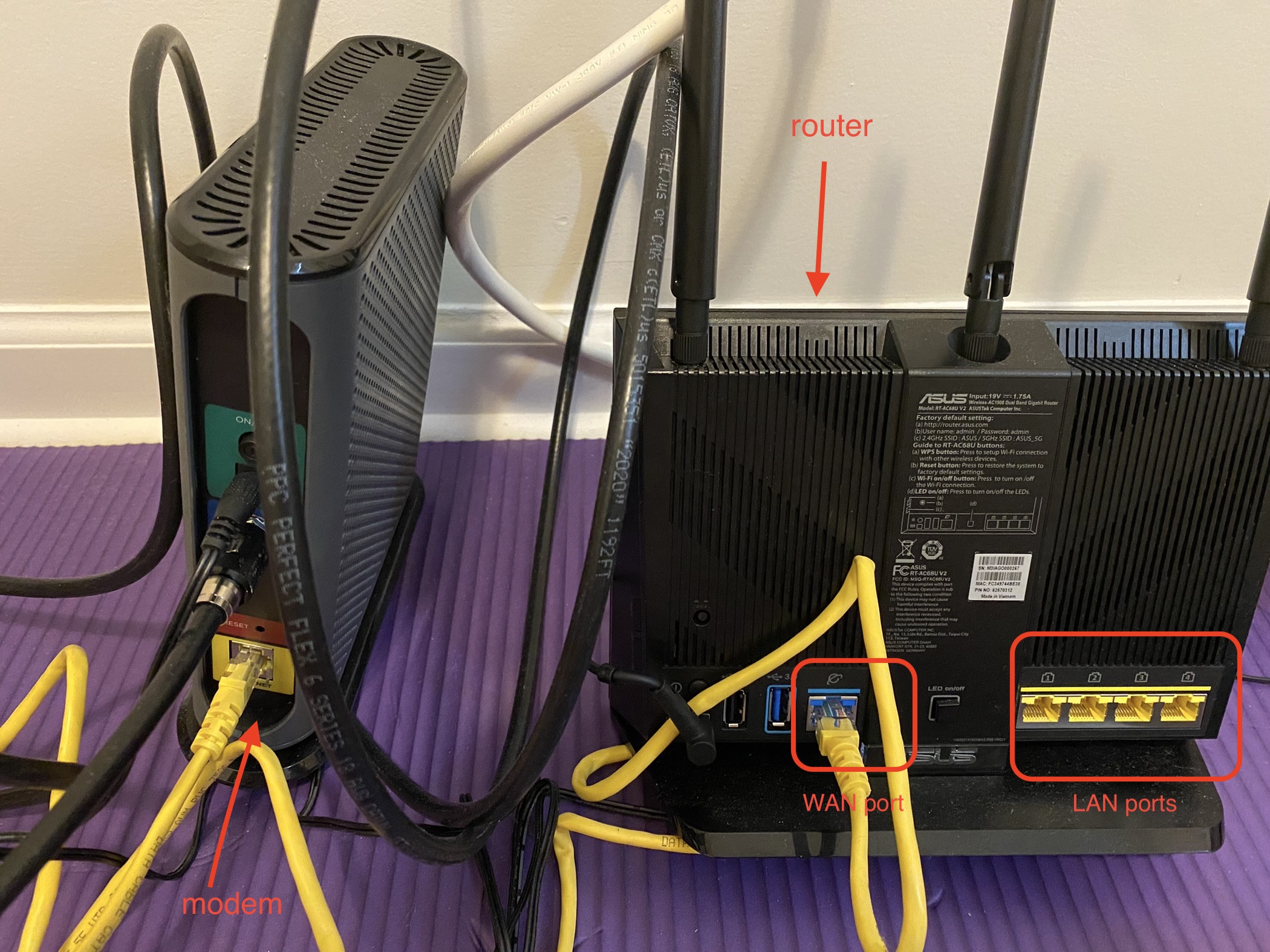Network knowledge that every college student should know
Router, LAN, WAN, NAT
Each router has a private ip address and a public ip address.
Router will assign private ip address to the devices behind its local area network (LAN). Use a home LAN as an example. Suppose your router has a private ip address 192.168.0.1 and public ip address 99.99.99.99. The public ip address is determined by the internet provider you use, such as AT&T. The private ip address can be whatever the router manufacture decides, but it is usually 192.168.0.1. You can google why 192.168.0.1 is the most used private ip address for a router :). For each device in this LAN, like your home desktop, it will be assigned a private address in the same subnet like 192.168.0.22. When your desktop needs to connect to a website on internet, say 88.88.88.88, it sends a web packet like {from:192.168.0.22, to: 88.88.88.88, data:...} to router, then router transforms this packet to {from: 99.99.99.99, to: 88.88.88.88}, and sends it to internet. Meanwhile, router adds a record
1
192.168.0.22: 88.88.88.88
to its NAT (network address translation) table, which means “I am communicating to 88.88.88.88 on behalf of 192.168.0.22”. With NAT, router knows which device it should forward the packets received from internet. The details here are not restrict. Just get my idea.
Usually, the backside of the router provides login info to change router settings. The user name and password is usually admin and admin. Also, you can find the router private ip address from your phone or laptop and directly typing it in your browser will open the setting page.
As said, router is a device to connect your devices in a LAN to WAN (wide are network), i.e., internet. It must has two ends. One end connects LAN devices, and the other end connects to WAN device. On the back of a router, you can find two kinds of ports. One is for LAN. You connect your home laptop to this port using a wire. The other port is WAN and connects to a modem.
ARP, MAC
As said in the above section, NAT plays an important role connecting LAN and WAN. That happens at network level, i.e., IP level. What under it is data link level. This level deals with MAC (media access control) address. How does router know which physical device to forward traffic to given a private ip address? This is called ARP (Address Resolution Protocol). Basically, It is a cache that maps IP address to MAC address. See more details here.
Routing table
Router vs gateway, default gateway vs network switch
First router and network switch are very similar. Probably network switch usually refers to a “router” with much better performance.
I still cannot figure out the difference between a gateway and router. From what I read, gateway has ability to translate protocols between two networks.
Network interface
First some terminology and abbreviations.
- NIC: network interface controller, or called it another way, network interface card. -
virtual network interface
veth: Virtual Ethernet Device. See its man page
netfilters, iptables
TODO: I know little about netfilers. I should read more about this subject.
There are multiple iptables. One is filter table, core for firewall rule. The other is NAT table, kind of network proxy built inside Linux kernel.
References
- CIDR https://www.digitalocean.com/community/tutorials/understanding-ip-addresses-subnets-and-cidr-notation-for-networking
Websocket
Websocket requires two headers Connection and Upgrade at the initial handshake stage. While these two are hop-by-hop headers, so it will affect websocket proxy.
See how Nginx deals with websocket https://www.nginx.com/blog/websocket-nginx
DNS
- DNS: domain name system. Refer to this system as whole
- DNS lookup: the process that translate a domain name to an ip address.
- DNS records: records in Authoritative server. Ex: A record, CNAME record, etc.
See cloudflare doc and RFC-1034
DNS resolver
Read the wiki of /etc/resolv.conf. It defines the name server and list of searches
DNS in kubernetes
Check this post
